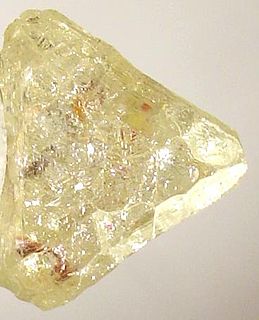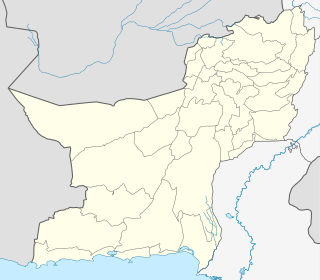Eldorado Gold Corporation is a Canadian company that owns and operates gold mines in Turkey, Greece and Canada. Since its merger with European Goldfields in 2011 the company has been pursuing the development of the Skouries mine, Olympias mine and Stratoni mine in Greece. The company previously developed and operated gold mines in China, Brazil and Mexico. Headquartered in Vancouver and listed on the Toronto and New York Stock Exchanges, Eldorado Gold has developed and operated assets from several merged companies HRC Developments Corporation, Afcan Mining Corporation, Sino Gold Mining, Brazauro Resources, Integra Gold, as well as European Goldfields.

Kennecott Utah Copper LLC (KUC), a division of Rio Tinto Group, is a mining, smelting, and refining company. Its corporate headquarters are located in South Jordan, Utah. Kennecott operates the Bingham Canyon Mine, one of the largest open-pit copper mines in the world in Bingham Canyon, Salt Lake County, Utah. The company was first formed in 1898 as the Boston Consolidated Mining Company. The current corporation was formed in 1989. The mine and associated smelter produce 1% of the world's copper.

Porphyry copper deposits are copper ore bodies that are formed from hydrothermal fluids that originate from a voluminous magma chamber several kilometers below the deposit itself. Predating or associated with those fluids are vertical dikes of porphyritic intrusive rocks from which this deposit type derives its name. In later stages, circulating meteoric fluids may interact with the magmatic fluids. Successive envelopes of hydrothermal alteration typically enclose a core of disseminated ore minerals in often stockwork-forming hairline fractures and veins. Because of their large volume, porphyry orebodies can be economic from copper concentrations as low as 0.15% copper and can have economic amounts of by-products such as molybdenum, silver, and gold. In some mines, those metals are the main product.
Kinross Gold Corporation is a Canadian-based gold and silver mining company founded in 1993 and headquartered in Toronto, Ontario, Canada. Kinross currently operates eight active gold mines, and was ranked fourth of the "10 Top Gold-mining Companies" of 2017 by InvestNews. The company's mines are located in Brazil, Ghana, Mauritania, Russia and the United States. It trades under the KGC ticker in the New York Stock Exchange and under K in the Toronto Stock Exchange.

The Bingham Canyon Mine, more commonly known as Kennecott Copper Mine among locals, is an open-pit mining operation extracting a large porphyry copper deposit southwest of Salt Lake City, Utah, in the Oquirrh Mountains. The mine is the largest man-made excavation, and deepest open-pit mine in the world, which is considered to have produced more copper than any other mine in history – more than 19 million tons. The mine is owned by Rio Tinto Group, a British-Australian multinational corporation. The copper operations at Bingham Canyon Mine are managed through Kennecott Utah Copper Corporation which operates the mine, a concentrator plant, a smelter, and a refinery. The mine has been in production since 1906, and has resulted in the creation of a pit over 0.75 miles (1,210 m) deep, 2.5 miles (4 km) wide, and covering 1,900 acres. It was designated a National Historic Landmark in 1966 under the name Bingham Canyon Open Pit Copper Mine. The mine experienced a massive landslide in April 2013 and a smaller slide in September 2013.

Copper mining in the United States has been a major industry since the rise of the northern Michigan copper district in the 1840s. In 2017 the United States produced 1.27 million metric tonnes of copper, worth $8 billion, making it the world's fourth largest copper producer, after Chile, China, and Peru. Copper was produced from 23 mines in the US. Top copper producing states in 2014 were Arizona, Utah, New Mexico, Nevada, and Montana. Minor production also came from Idaho, and Missouri. As of 2014, the US had 45 million tonnes of known remaining reserves of copper, the fifth largest known copper reserves in the world, after Chile, Australia, Peru, and Mexico.

Gold mining in the United States has taken place continually since the discovery of gold at the Reed farm in North Carolina in 1799. The first documented occurrence of gold was in Virginia in 1782. Some minor gold production took place in North Carolina as early as 1793, but created no excitement. The discovery on the Reed farm in 1799 which was identified as gold in 1802 and subsequently mined marked the first commercial production.

Copper mining in Arizona, a state of the United States, has been a major industry since the 19th century. In 2007 Arizona was the leading copper-producing state in the US, producing 750 thousand metric tons of copper, worth a record $5.54 billion. Arizona's copper production was 60% of the total for the United States. Copper mining also produces gold and silver as byproducts. Byproduct molybdenum from copper mining makes Arizona the nation's second-largest producer of that metal. Although copper mineralization was found by the earliest Spanish explorers of Arizona, the territory was remote, and copper could seldom be profitably mined and shipped. Early Spanish, Mexican, and American prospectors searched for gold and silver, and ignored copper. It was not until the completion of the Southern Pacific Railroad in 1876 that copper became broadly economic to mine and ship to market.

Gold mining in Alaska, a state of the United States, has been a major industry and impetus for exploration and settlement since a few years after the United States acquired the territory from Russia. Russian explorers discovered placer gold in the Kenai River in 1848, but no gold was produced. Gold mining started in 1870 from placers southeast of Juneau, Alaska.

The Mining industry of Ghana accounts for 5% of the country's GDP and minerals make up 37% of total exports, of which gold contributes over 90% of the total mineral exports. Thus, the main focus of Ghana's mining and minerals development industry remains focused on gold. Ghana is Africa's largest gold producer, producing 80.5 t in 2008. Ghana is also a major producer of bauxite, manganese and diamonds. Ghana has 23 large-scale mining companies producing gold, diamonds, bauxite and manganese, and, there are also over 300 registered small scale mining groups and 90 mine support service companies.

The Telfer Mine is a gold, copper and silver mine located at Telfer on the land of the Martu people, in the Great Sandy Desert of Western Australia. It is owned by Newcrest Mining, "the largest gold producer listed on the Australian Securities Exchange."

The Batu Hijau mine is an open pit copper-gold mine operated by PT. Amman Mineral Nusa Tenggara. The mine is the second largest copper-gold mine in Indonesia behind the Grasberg mine of PT. Freeport Indonesia. The mine is located 1,530 kilometres (950 mi) east of the Indonesian capital Jakarta on Sumbawa, in southern Taliwang regency, an island in West Nusa Tenggara. The mine is the result of a ten-year exploration and construction program based on a 1999 discovery of the porphyry copper deposit. Production began in 2000.

The Reko Diq mine is located near Reko Diq town in Chagai District, Baluchistan, Pakistan. It is one of the largest copper and gold mines in the world located in the south west part of Pakistan in Balochistan province. Reko Diq represents one of the largest copper and gold reserves in the world having estimated reserves of 5.9 billion tonnes of ore grading 0.41% copper and gold reserves amounting to 41.5 million oz.
European Goldfields Ltd. was an EU-focused, Whitehorse based Canadian precious metals company engaged in gold, silver and copper exploration, development and production. The mining rights it owned to land in Greece, Romania and Turkey gave it access to over 10 million ounces of 2P gold reserves in addition to over 80 million ounces of silver.

The Robinson Mine is a porphyry copper deposit located at Ruth, White Pine County, Nevada, in the Egan Range, 4 miles (6.4 km) west of Ely. The mine comprises three large open pits: Liberty, Tripp-Veteran and Ruth. The ore is extracted using conventional surface methods, and is then processed into a copper-gold concentrate, and a molybdenum concentrate in a concentrating plant. Since 2012 the mine has been owned and operated by Polish copper miner KGHM Polska Miedź S.A.

The New World Mining District is an area of mineralization that sits within Gallatin National Forest to the northeast of Cooke City and Yellowstone National Park, in Park County, Montana, United States. The district hosts extensive deposits of gold, silver and copper in zones of carbonate replacement. These deposits are the result of Eocene hydrothermal alteration of Cambrian carbonates related to the Absaroka volcanic field. Alteration and mineralization occur primarily within carbonate clasts hosted in a volcanic breccia pipe and in carbonate rocks that lie adjacent to that breccia.

Rosemont Copper is the name of a proposed new and large open pit copper mine project pursued by the Canadian mining corporation Hudbay Minerals. It has undergone a permitting review process under the direction of the United States Forest Service and the U.S. Army Corps of Engineers and has been delayed by legal judgements and suspension of its operating permit by the US Army Corps of Engineers. The project site is located within the Santa Rita Mountains and Coronado National Forest, in Pima County of southern Arizona.

The La Colosa Au porphyry gold in Colombia. The is located in Cajamarca, Tolima on the eastern flanks of the Central Ranges of the Colombian Andes. La Colosa has estimated inferred resources of 24,000,000 ounces (680 t) of gold, grading at 0.9 to 1.0 milligram per kilogram of Au. In 2015, the mine produced 1,810.35 grams (63.858 oz) of gold. In 2016, 88.4% of the mining value in Colombia came from coal and gold combined, with nickel following at 9.3%.
The Olympias mine is a previously producing gold-silver-lead-zinc mine located in the Halkidiki Peninsula in northern Greece. It was on care and maintenance between 1995-2010 and is currently under redevelopment by Eldorado Gold. Production is targeted in Q1 2017.

The Mount Polley mine is a Canadian gold and copper mine located in British Columbia near the towns of Williams Lake, and Likely. It consists of two open-pit sites with an underground mining component and is owned and operated by the Mount Polley Mining Corporation, a wholly owned subsidiary of Imperial Metals. In 2013, the mine produced an output of 38,501,165 pounds (17,463,835 kg) of copper, 45,823 ounces of gold, and 123,999 of silver. The mill commenced operations in 1997 and has a current mine life to 2026. The mining company owns 20,113 hectares (201.13 km2) of property near Quesnel Lake and Polley Lake where it has mining leases and operations on 2,007 hectares (20.07 km2) and mineral claims on 18,106 hectares (181.06 km2). The processed ore is delivered by truck to the Port of Vancouver. The mine is on care and maintenance status until the price of gold, copper, and silver becomes more economically viable.
















